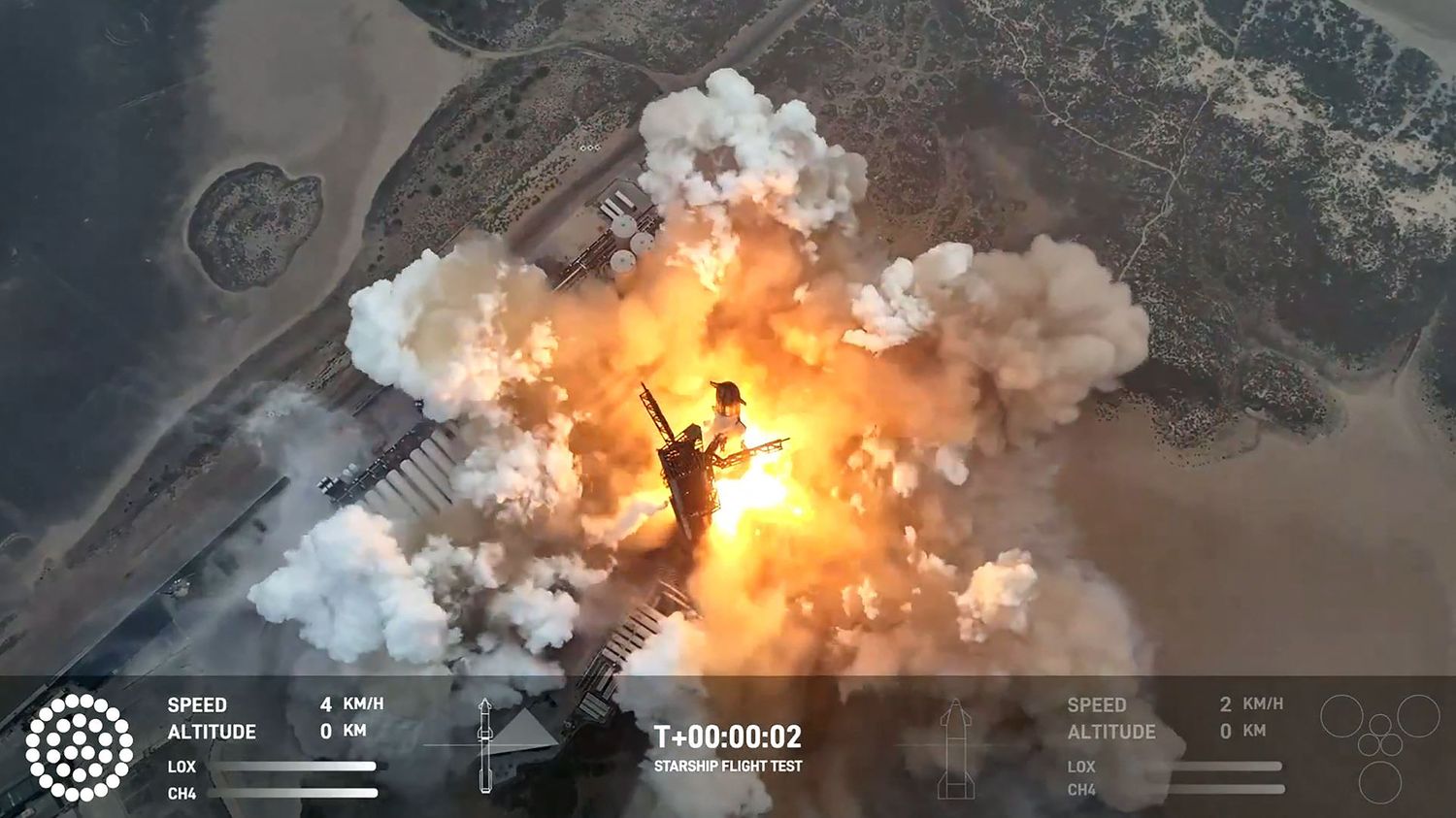The Starship rocket successfully returned to Earth and landed. A test full of promise for the sector in which Europe is in turn investing.

Published
Reading time: 2 mins

The SpaceX teams express their joy at the images transmitted from the cameras installed on board the ship. After an hour of flight at more than 200 kilometers altitude, Thursday June 6, landing is confirmed for Starship in the Indian Ocean. The three previous tests ended in explosions after takeoff. But this time, the spacecraft manufactured by SpaceX, the company of billionaire Elon Musk, went even further.
This is therefore a first, but the return to Earth was not without incident. The atmospheric re-entry damaged the craft. Pieces of the fins and the heat shield disintegrated in the infernal heat. For Elon Musk’s company, it remains a success. Especially since the first part of the flight went as planned.
The main stage of this 120 meter high rocket also managed to return to earth after accompanying the vessel into space. The landing took place in the Gulf of Mexico. Engineers will now analyze the data to further improve the device which will one day transport astronauts. The head of the American space agency greets “one more step towards humanity’s return to the Moon”.
This extraordinary rocket should allow the United States to return to the Moon in the coming years or even one day to Mars. Another competitor to SpaceX, Boeing’s Starliner spacecraft which took off on Wednesday towards the International Space Station with, for the first time, astronauts on board. Europe has just decided to invest in this spaceship sector.
To send equipment or men into space, Europe must now go through NASA and its service providers, the former access via Russia having been closed since the start of the war in Ukraine. To no longer be dependent, the European Space Agency has therefore just selected, with financial support, two continental projects to develop a vessel with precise specifications. “We want these companies to be able to implement a mission to demonstrate a resupply service on the International Space Stationindicates astronaut Samantha Cristoforetti, responsible for this program at ESA. And this should ideally happen before 2028, but in any case not beyond 2030 because this is the end of life of the International Space Station.”
For the project to be economically viable in the long term, the two companies selected, the Franco-German The Exploration Company and the Franco-Italian Thales Alenia Space will also be able to offer their spacecraft to other companies, several private space station projects being in development, with the eventual possibility of also transforming their cargo capsule into a vehicle welcoming astronauts, which would offer Europe, for the first time, completely autonomous access to space.
